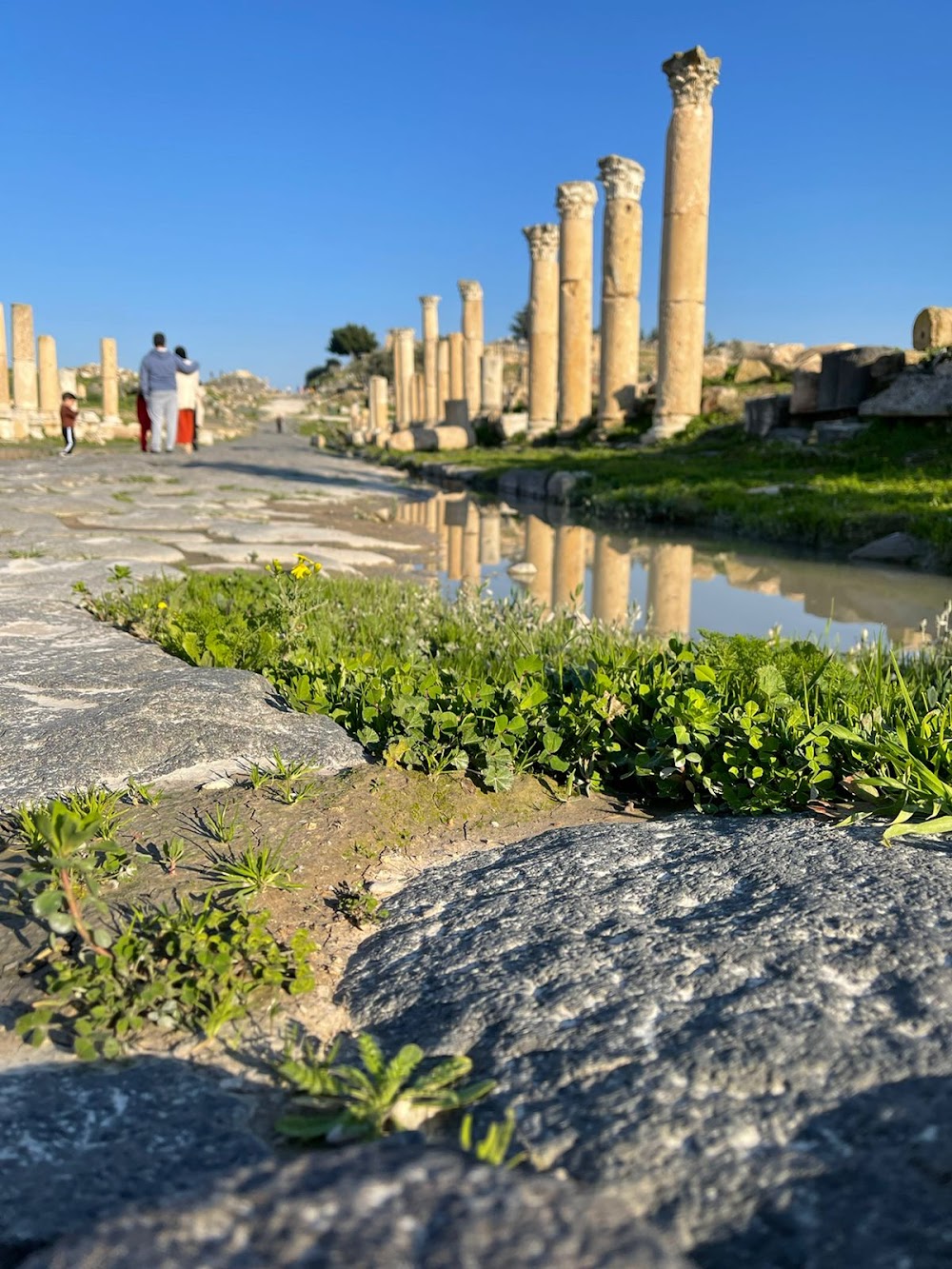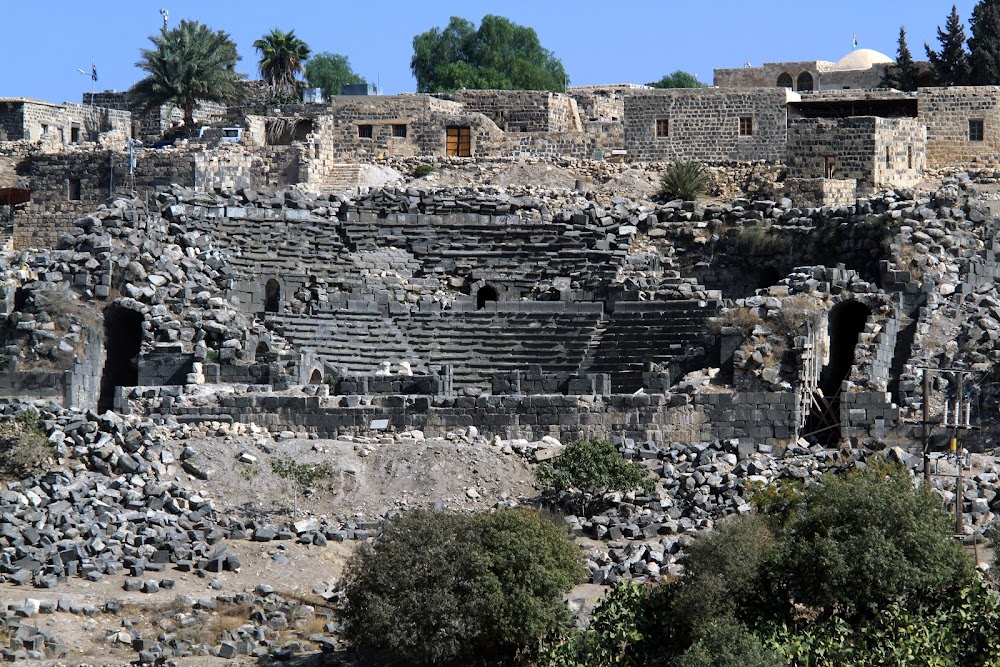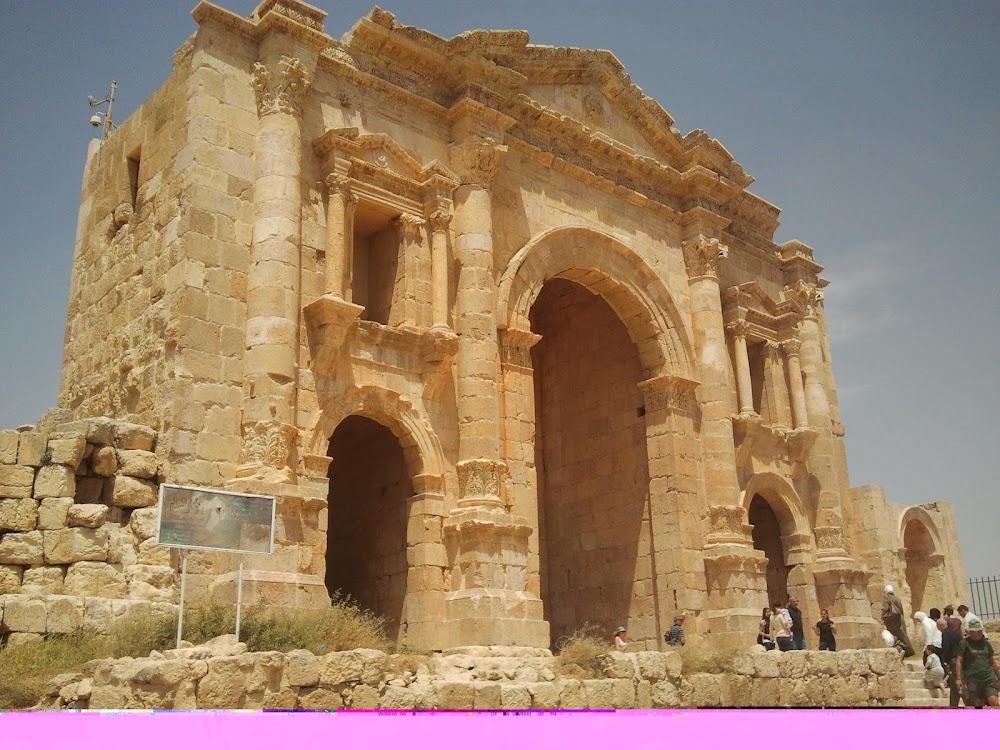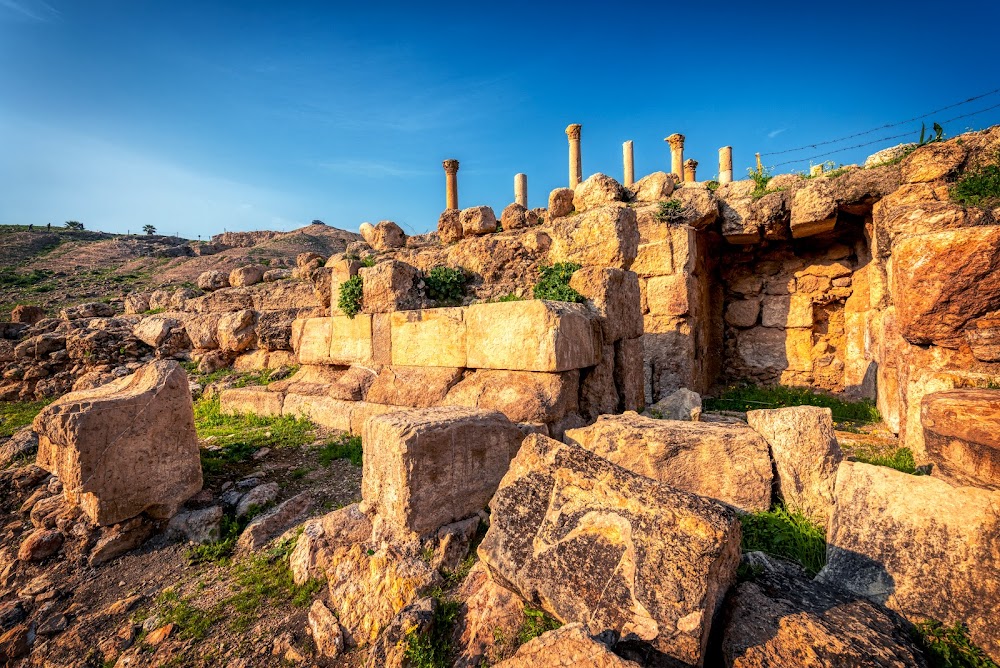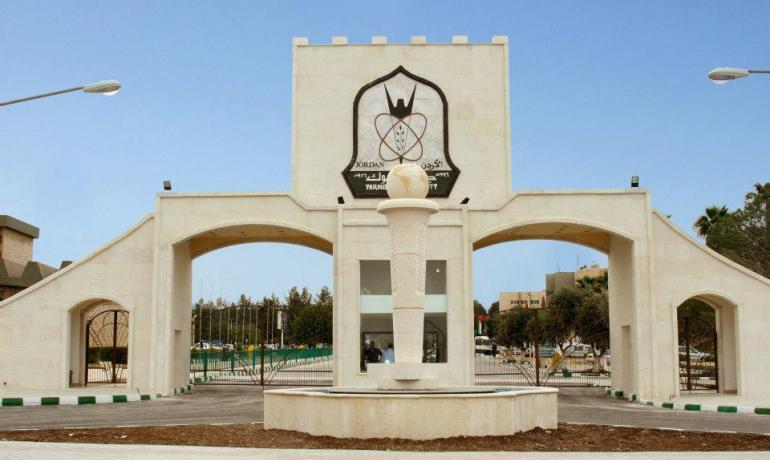Umm Qais (أم قيس)
Overview
Umm Qais, nestled in the Irbid region of Jordan, is a captivating historical destination that draws countless visitors eager to explore its rich past. This ancient city, once referred to as Gadara, was a prominent member of the Decapolis—a collection of ten cities that served as vibrant centers of Greek and Roman culture in the Middle East. Gadara flourished during the Roman period, strategically perched above the stunning Sea of Galilee, the Yarmouk River, and the Golan Heights.
Roman Influence and Development
The city's remarkable development can largely be attributed to Roman influence. In the 3rd century BC, Gadara emerged as a significant hub for philosophy, arts, and literature. Recognizing its potential, the Romans invested heavily in the city, erecting impressive structures and infrastructure that continue to captivate visitors today.
Colonnaded Streets and Roman Theater
One of the standout features of Umm Qais is its well-preserved colonnaded streets. These grand, stone-paved roads, lined with columns crafted from local basalt, evoke a sense of the bustling life that once filled the city with merchants, scholars, and citizens going about their daily affairs. Walking these streets, you can almost hear the echoes of ancient conversations.
Adding to the allure is the magnificent Roman theater, constructed from black basalt. With a capacity of up to 3,000 spectators, this semi-circular structure served as a vibrant center for entertainment and social gatherings, hosting plays and performances. Its exceptional acoustics ensure that even the faintest whisper from the stage can be heard clearly, a testament to Roman engineering prowess.
Ingenious Aqueducts and Byzantine Church
Another fascinating aspect of Umm Qais is its ancient aqueduct system, which showcases the Romans' extraordinary engineering skills. Designed to transport water over long distances, these aqueducts ensured a reliable water supply for the city's inhabitants. Remarkably, some sections remain intact today, highlighting the advanced capabilities of Roman builders.
Visitors should not overlook the ruins of the Byzantine church, a striking reminder of the city's Christian heritage. This church features intricate mosaics and architectural details that reflect a rich blend of cultural influences over the centuries, offering a glimpse into the spiritual life of the community.
Al-Himma Thermal Baths
Just a stone's throw from Umm Qais lie the Al-Himma thermal baths, historically prized for their healing properties stemming from naturally warm, mineral-rich waters from nearby hot springs. The site reveals remnants of changing rooms, bathing pools, and heating systems, showcasing the sophistication of Roman spa culture.
Stunning Views and Ongoing Excavations
Exploring Umm Qais is not solely about ancient ruins; it also offers breathtaking natural landscapes. The panoramic views from the hilltops are nothing short of spectacular, encompassing the Jordan Valley, the Sea of Galilee, and vistas extending into Israel and Syria. These stunning backdrops enhance the charm of this historic site.
The allure of Umm Qais is further enriched by ongoing archaeological excavations, which continue to unveil layers of its intriguing history. The Jordanian Department of Antiquities, in collaboration with international teams, diligently works to preserve and study these remnants of ancient civilizations. Artifacts discovered during these excavations are often showcased in the small yet informative Umm Qais Museum, housed in a beautifully restored Ottoman building within the archaeological site.
In summary, Umm Qais stands as a remarkable testament to Jordan's multifaceted history. Its ruins narrate tales from various eras, including Hellenistic, Roman, and early Islamic periods. This historical site not only highlights the architectural brilliance of ancient civilizations but also provides a tranquil setting for reflection on the past while reveling in the beauty of the surrounding landscapes.


